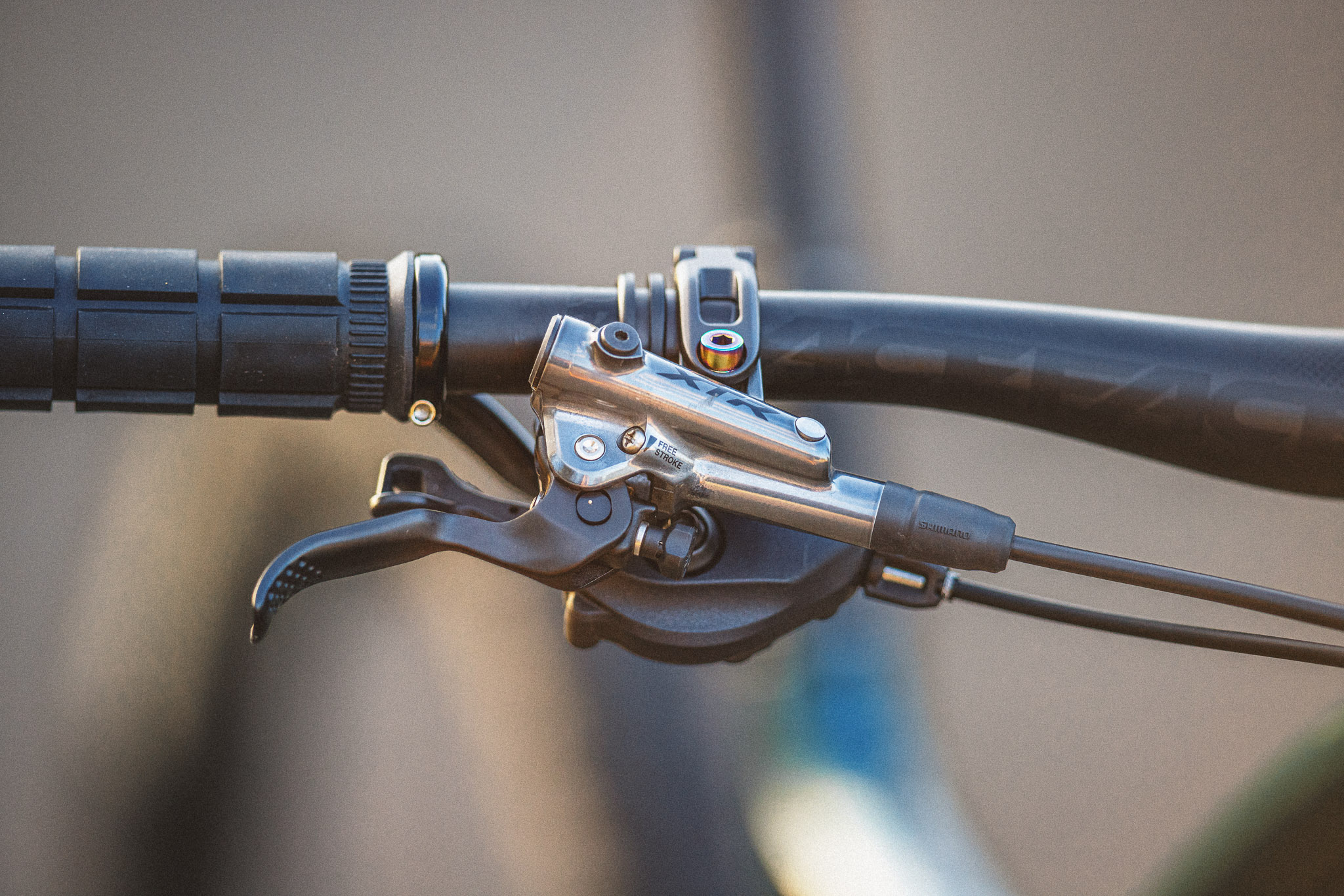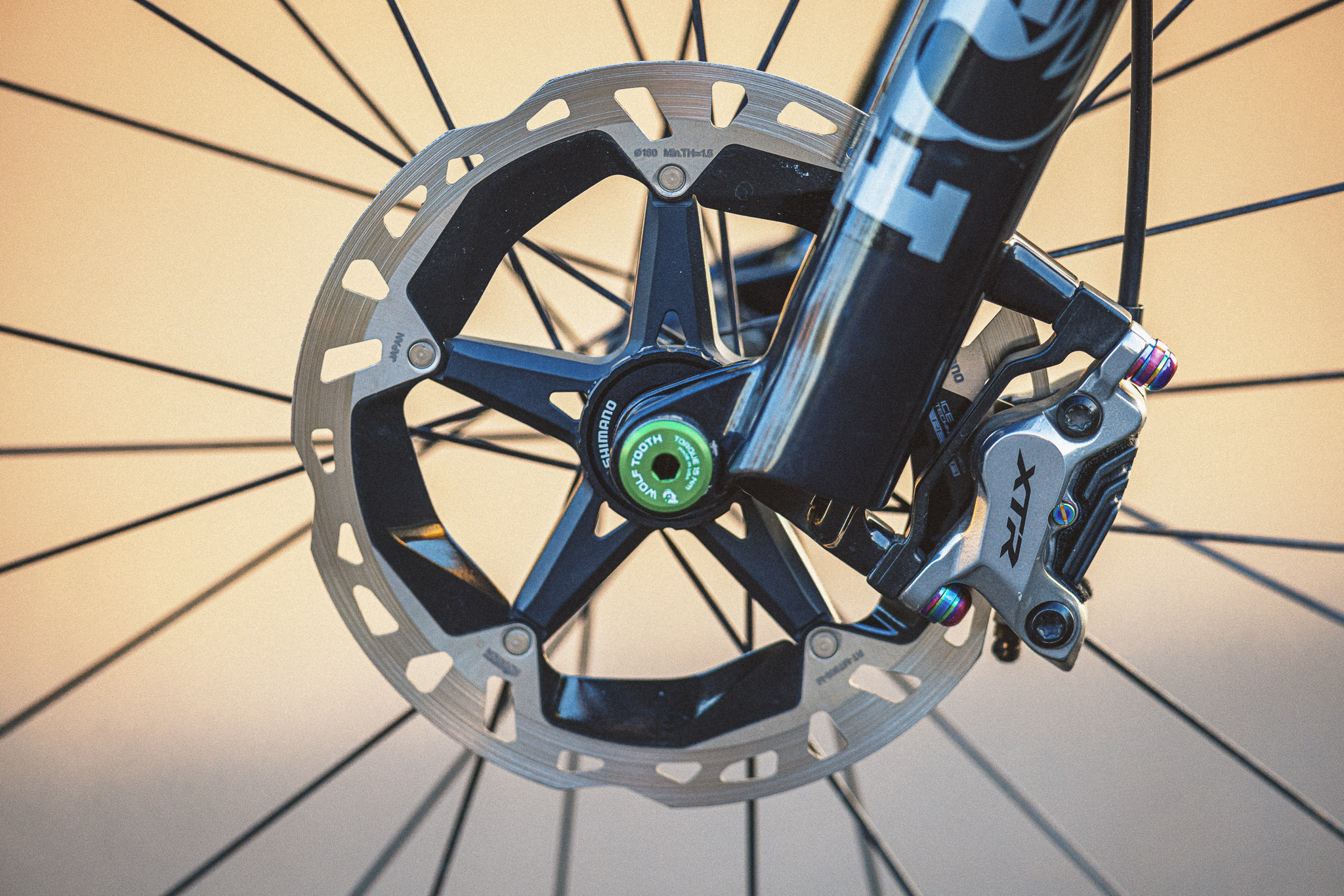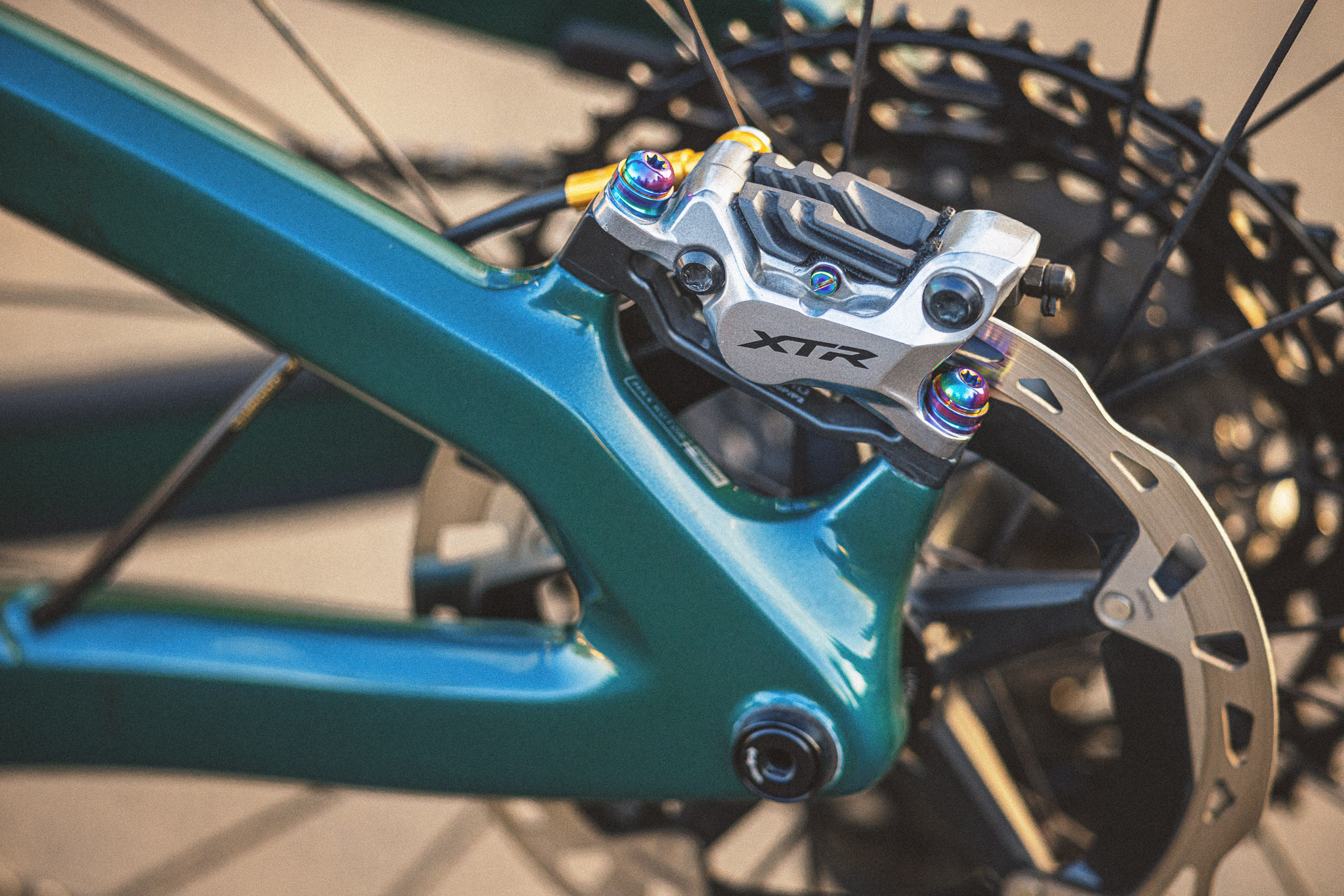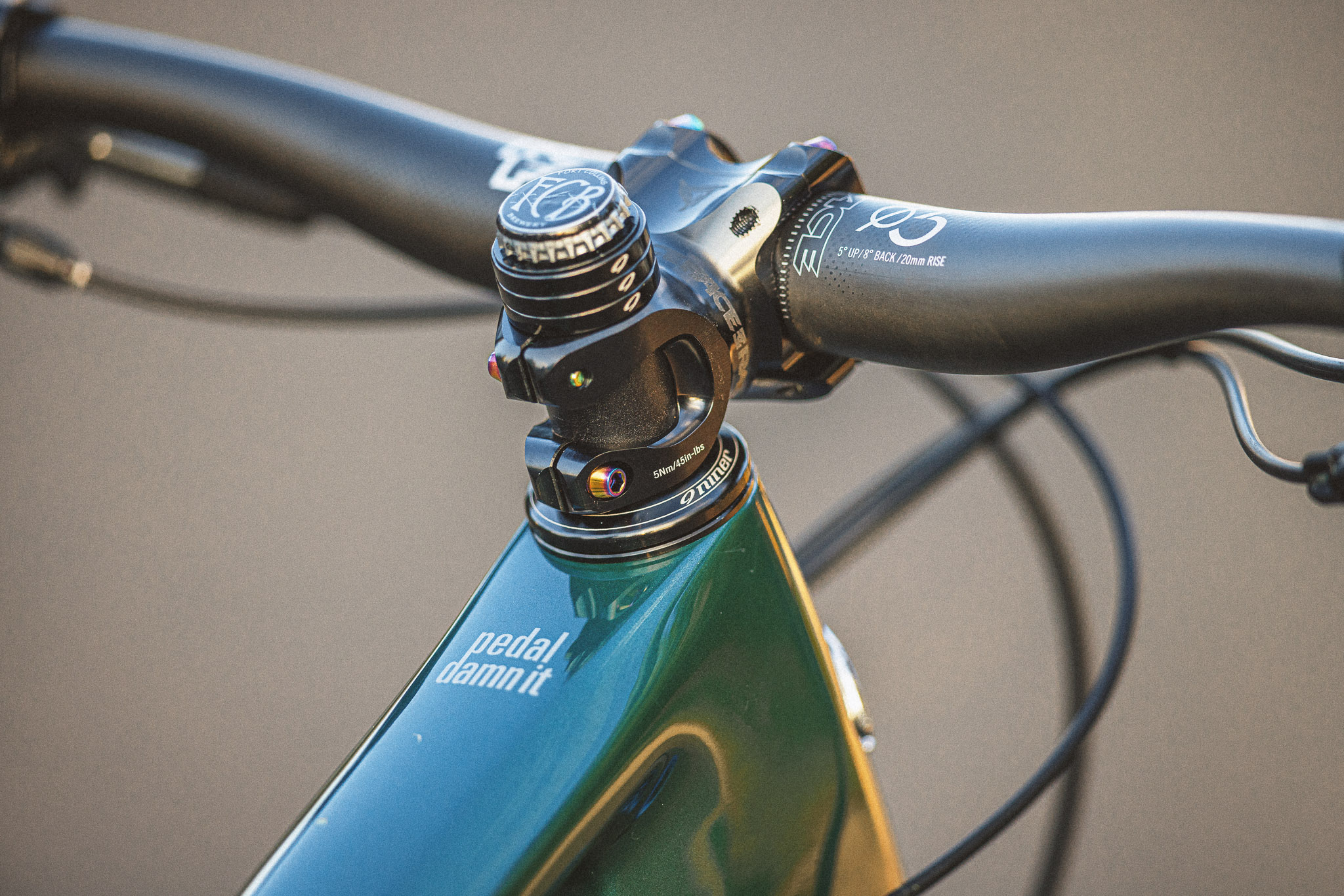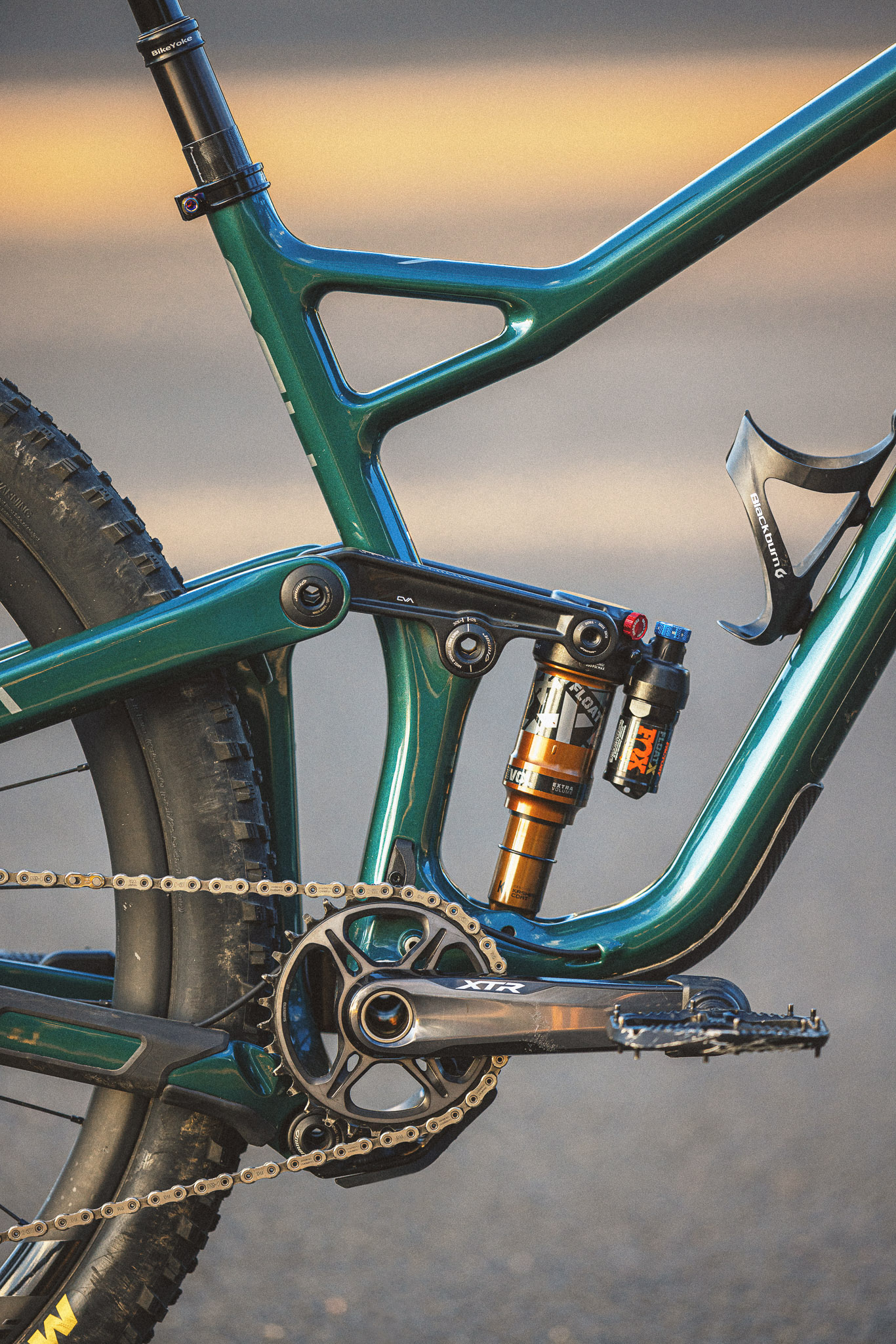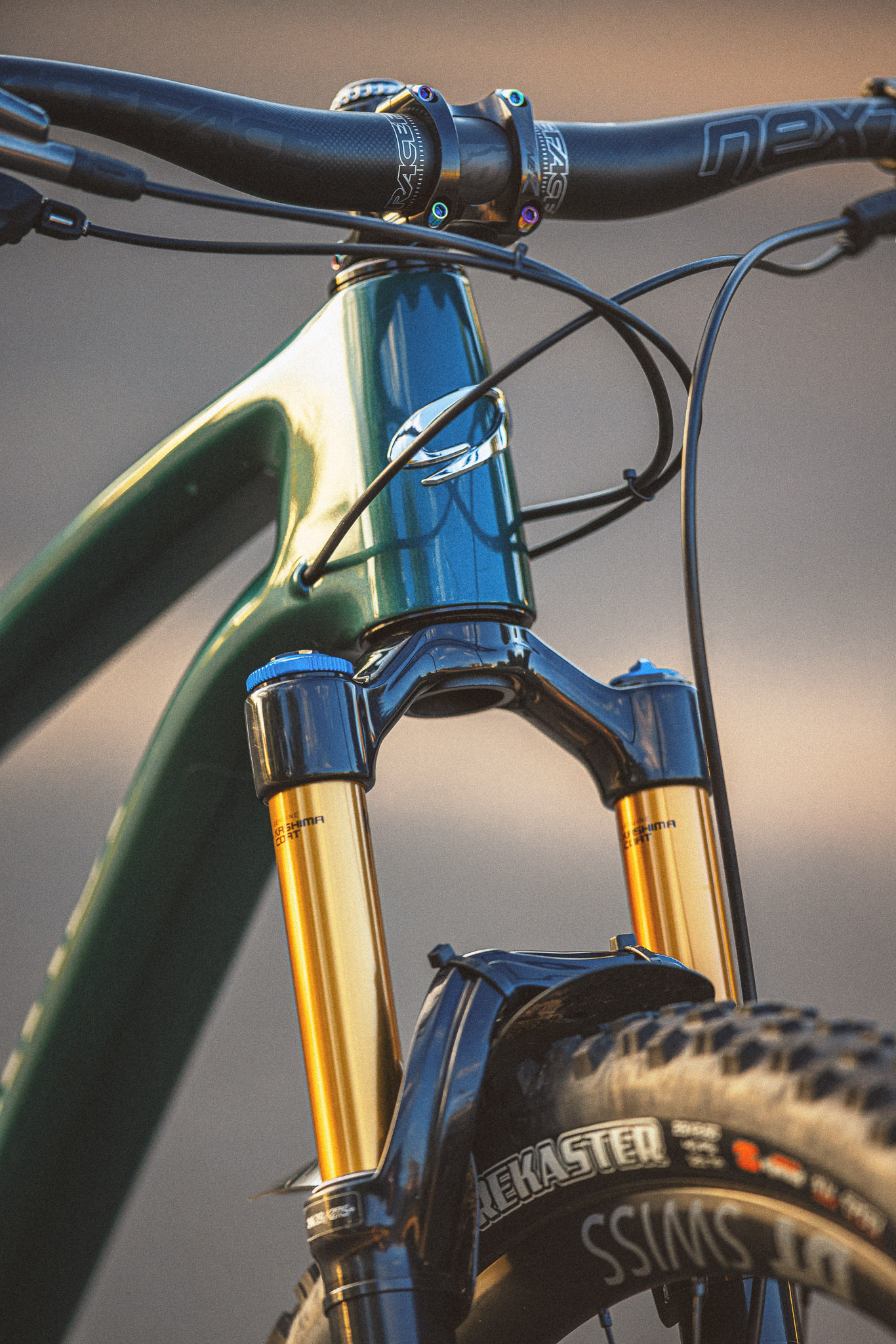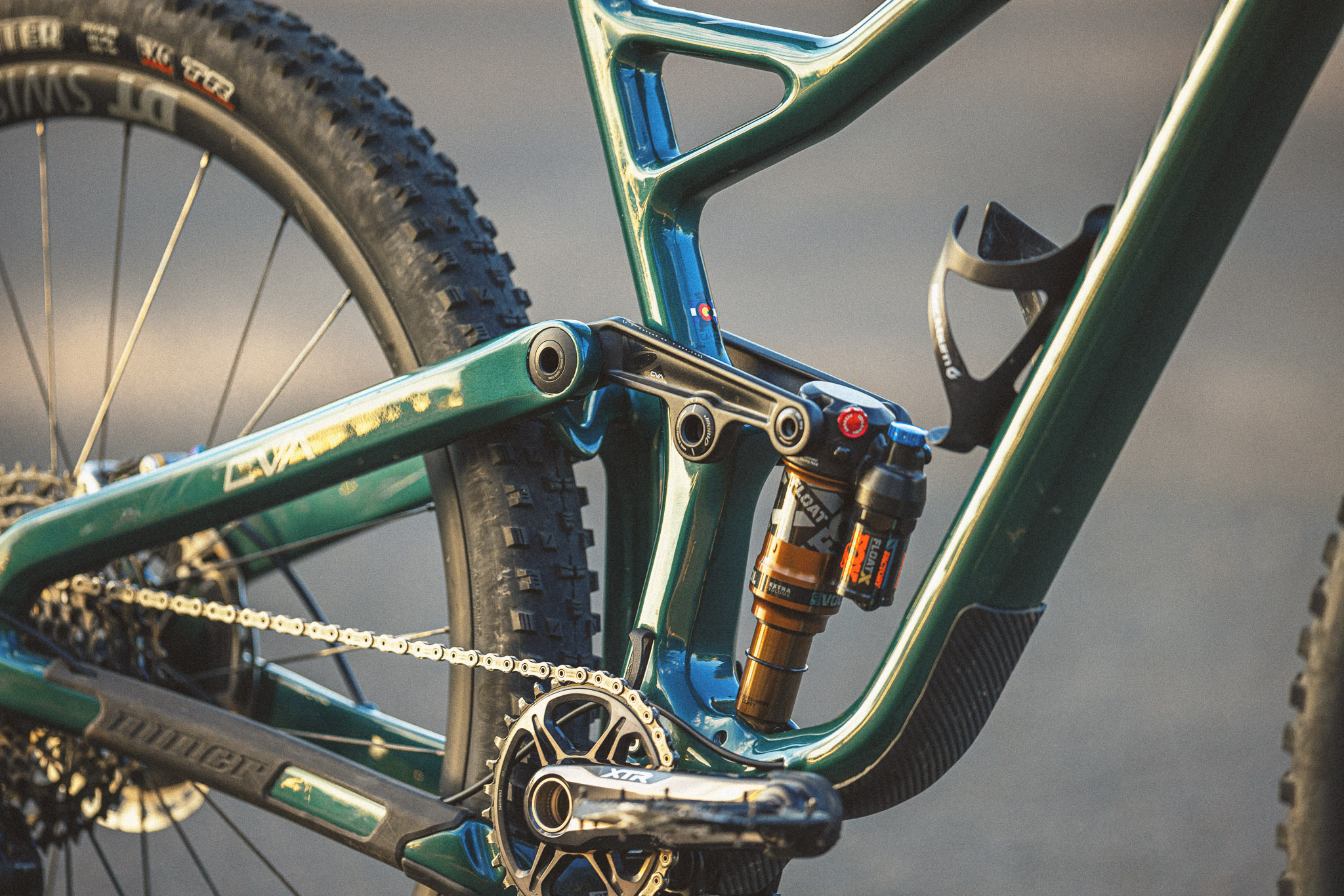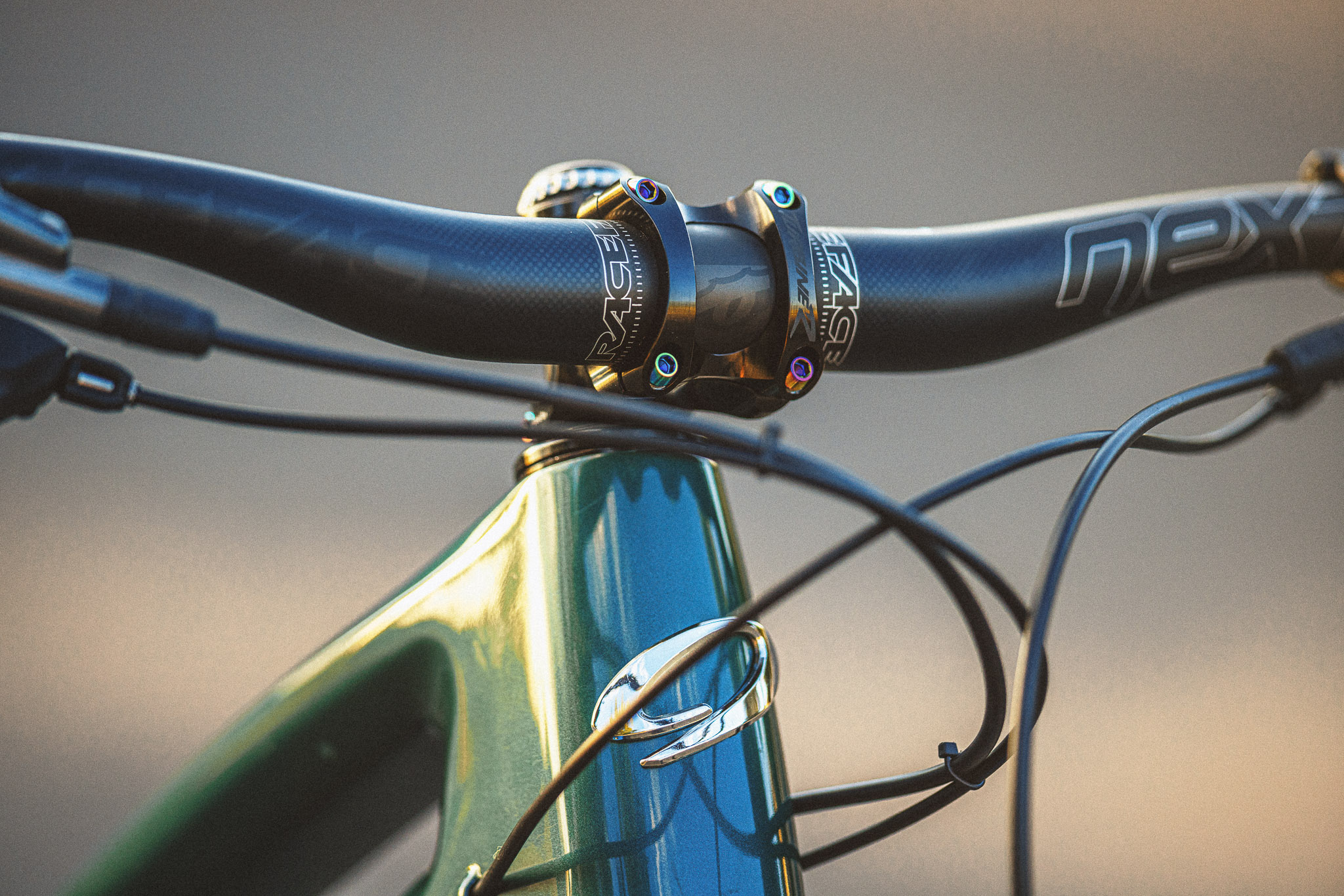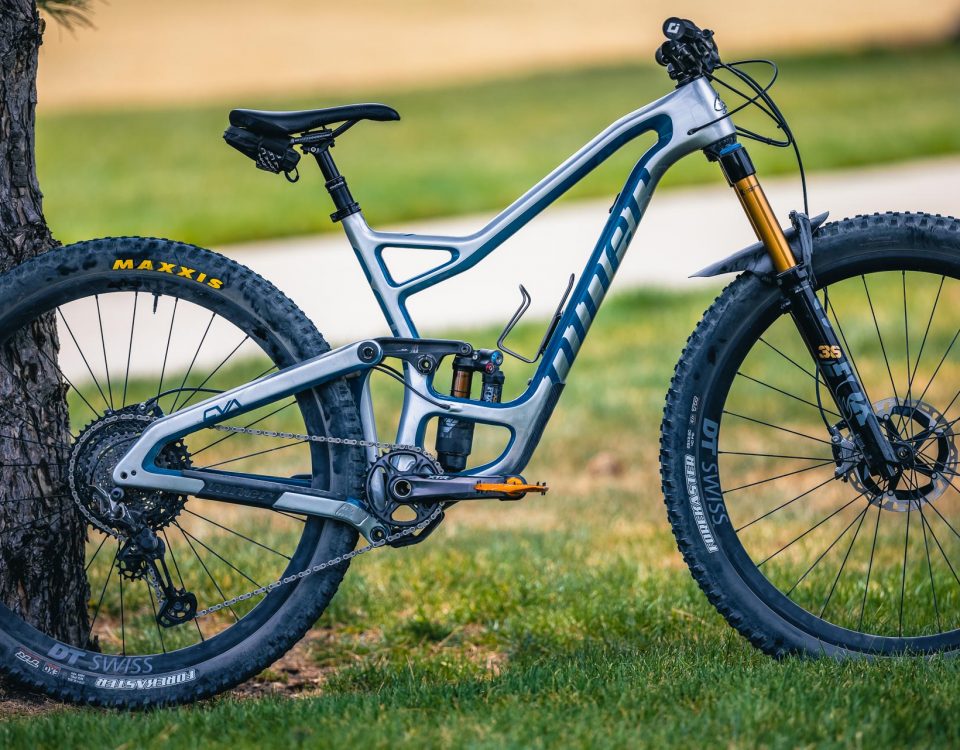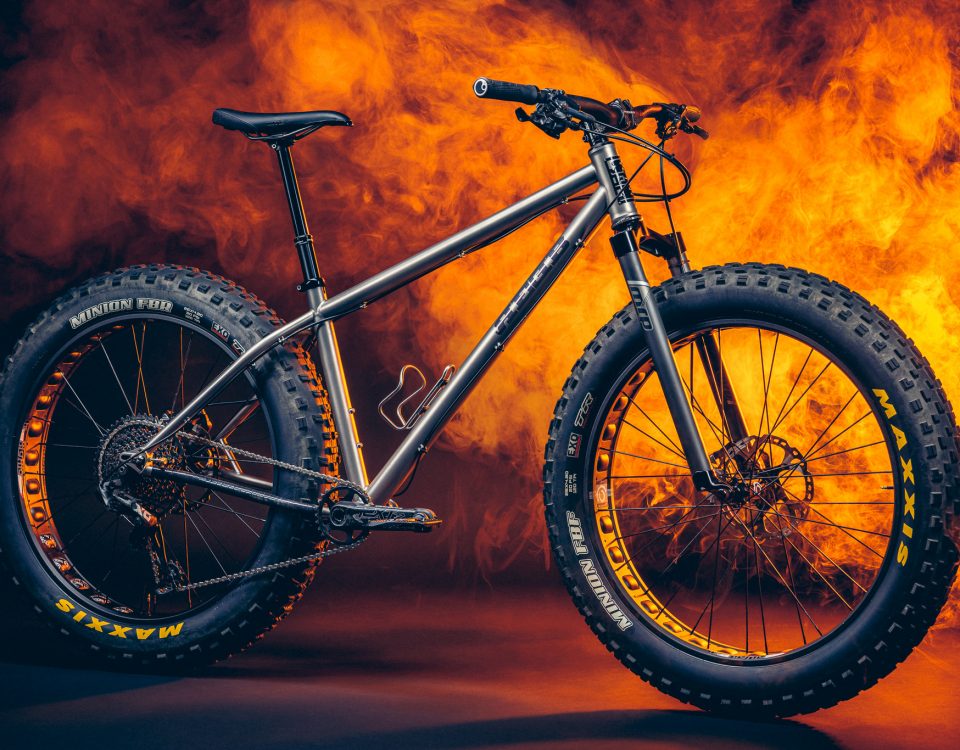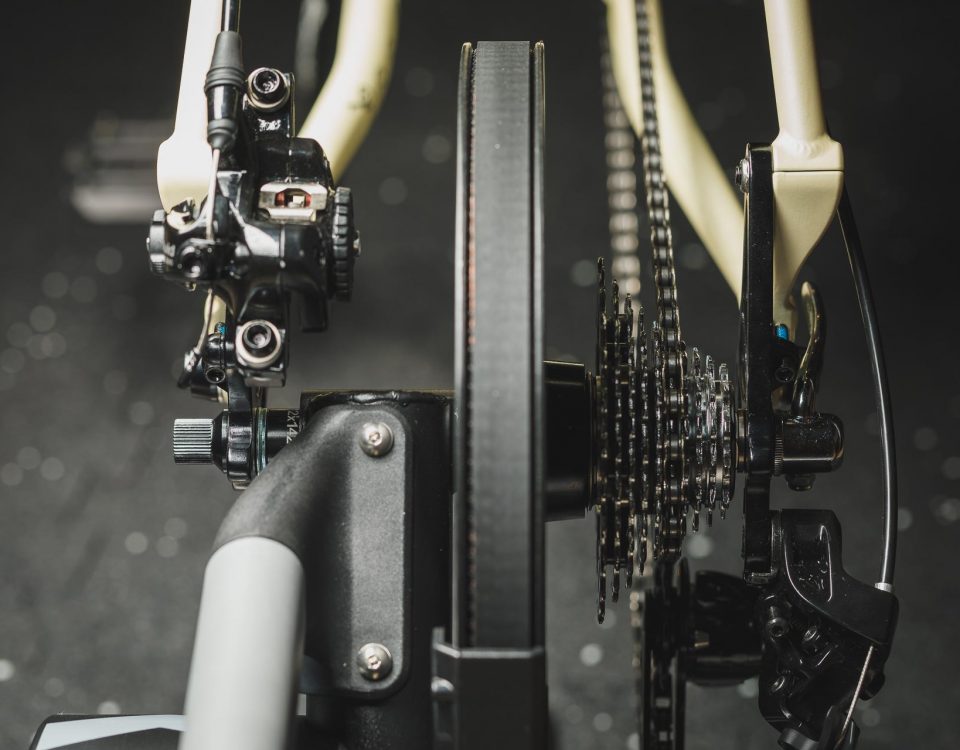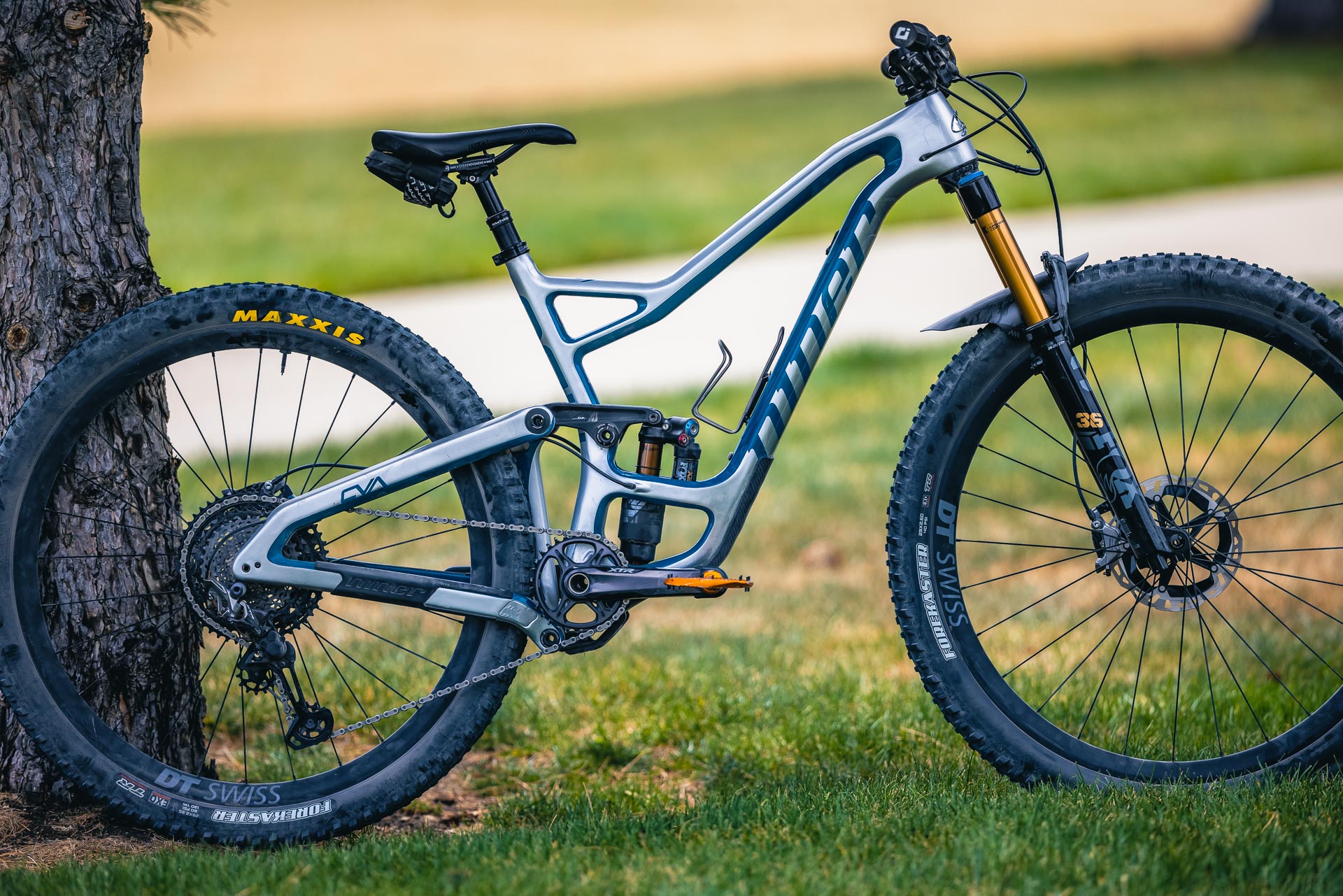
DIY custom-molded Kydex frame protection
June 10, 2021Fastest bike I've ever ridden?
T he latest bike to join my stable is Niner’s short-travel trail bike, the 2022 JET 9 RDO. It now sits alongside my 2021 RIP 9 RDO, which itself replaced a 2019 Guerrilla Gravity Trail Pistol—all of which we’re going to talk about here. Even though the JET has been on my wishlist since it was released last year, I didn’t really expect that it would ride hugely different from the RIP—there’s only 20mm of travel separating them after all. I was wrong.
The JET 9 RDO is Niner’s “most popular, most versatile, and most agile trail bike” and was recently redesigned in 2021. Check out this video I created with Niner about the new JET:
The Basics
The JET 9 RDO is a 29er with 120mm of rear-travel, paired with a 130mm fork. It sits between the RKT 9 RDO, which is Niner’s 100mm XC race bike, and the RIP 9 RDO, which is a 140mm all-rounder. The JET is a do-it-all short-travel trail bike. Like all Niner frames, it comes with a lifetime warranty.
- 120mm rear travel
- 130mm front travel (140mm max)
- Trunnion shock mount w/ bearings
- RDO carbon fiber frame - lifetime warranty
- Max tire size: 29 x 2.6"
- 180mm rotor size
- 12 x 148mm Boost rear axle spacing
- BSA threaded bottom bracket
- Cost: $7,149 (though this is for an XT build with alloy wheels; an XTR build is not currently offered)
How much travel do you need?
Don’t be pressured by the bro commenters on Pinkbike or Facebook to buy into a high-pivot, manly-man, enduro rig. The local Facebook MTB groups here in Colorado have people getting shamed for not running 6-piston, 220mm brakes and Cushcore-lined, DH-casing tires. There are plenty of people that have no problem pushing Assegai’s and coil-sprung 170mm enduro bikes as their everyday bike.
To be clear, I'm not saying long-travel bikes are bad, or you're stupid if you ride one. Not at all. Every rider has a style and a preference for what they like. Just be true to what yourself and don't feel pressured by marketing or social media, that's all. You don't NEED a big bike to ride hard trails, and you don't need a big bike to have fun. You do you.
For me, a lightweight, short-travel trail bike is ideal. I like long, "type II fun" rides of 20+ miles. I’ve experimented with bikes up to 160mm of travel over the years, but I've found I have more on a lightweight, fast-pedaling bike. I don't enjoy slogging around on a slow, heavy bike to only enjoy a few minutes of descending per ride; shuttle and lift laps are a different animal.
Living in Colorado and riding all over the west, I have ridden plenty of gnarly, steep, rocky trails on rigid fat bikes, hardtails, and short-travel 120mm bikes. I’ve ridden a 120mm bike at lift-access bike parks several times and on all the black diamond trails along the Colorado Front Range, Grand Junction, Steamboat, Angel Fire, Trestle, Moab, etc. Now, to be fair, I wouldn't ride a short-travel bike on freeride-type terrain with big drops, jumps, etc. and there are definitely DH trails at bike parks that are not very fun on a short-travel bike. If bike park days are a big part of your season, a 150mm+ bike is a wise choice.
The major difference is whether you prioritize pedaling and long days in the saddle, or prefer to compromise pedaling for faster descending. Generally, the less travel, the less fast you can hit technical and chunky portions of trail. It’s all relative though.“Under-biking” is hella fun because you’re still pushing your own skill limits, and the limits of the bike. A 140-160mm bike might gain seconds on a downhill segment compared to a 120mm bike, but the 120mm bike could gain minutes on the climb up.
That extra effort, weight, and slower ride time is totally worth it for some. For me, I’ve always pushed myself on the fitness side, and how fast I complete long Strava segments (entire loops, for example), or how fast I can climb local hills. Hitting mach-chicken and pushing my comfort zone on descents has never been worth the injury risk for me personally. Your mileage may vary.
I didn’t really expect that the JET 9 RDO would ride hugely different from the RIP 9 RDO… there’s only 20mm of travel separating them after all. I was wrong.
My Build
The components I built my JET with don’t much resemble any current build kit option offered by Niner. My bike is, admittedly, very high-end and weight weenie-esque. Disclaimer: I am not a dentist, just a bike nerd.
Fork: Fox 34 Factory - 130mm
Shock: Fox Float X Factory
Drivetrain: Shimano XTR (crankset, cassette, shifter, chain, derailleur)
Brakes: Shimano XTR - 180mm rotors
Wheels: DT Swiss XMC1200 carbon w/ 180s hubs
Tires: Maxxis Forekaster (original version) 29x2.6” front, 29x2.35” rear
Seatpost: BikeYoke Revive 185mm
Handlebar: RaceFace Next R
Pedals: OneUp Aluminum
I run a tiny Lezyne saddle bag where I store a Tubolito spare tube. Carbon bottle cage by Blackburn; lighter than a titanium King Cage (I weighed them both).
And we need to talk about the titanium bolts. After being inspired by Brad Copeland (Kate Courtney’s pro mechanic), I went a little crazy on the Better Bolts website and ordered rainbow titanium bolts for just about every bolt available on the bike, sans the handlebar clamp bolts. Was it a dumb waste of money? Probably. Do I regret it? Not for a second.
Total bike weight (no pedals, bottle cage, or saddle bag): 27.4 lbs.
And while we’re on the topic, my RIP 9 RDO and GG Trail Pistol both had similar builds (XTR, DT Swiss XMC1200 wheels, carbon bars, etc). The Trail Pistol was slightly different in that it had lighter Maxis Rekon tires, and a lighter inline shock. Here’s their comparative weights:
JET 9 RDO: 27.4 lbs
RIP 9 RDO: 28.4 lbs.
Trail Pistol: 28.7 lbs.
Interesting to note that the Trail Pistol weighs more than even the RIP, despite having 20mm less travel, a Fox 34 vs. 36 fork, lighter Maxxis Rekon tires, and an inline shock vs. reservoir shock. Apples-to-apples build against the JET would probably have the Trail Pistol over 2 lbs. heavier!
Geometry
The JET has pretty average modern geometry numbers, which is not a bad thing. I’m 5’10” with a 32” inseam, and ride a large frame size from Niner. The JET’s 475mm reach feels neutral and comfortable for my size. Similarly, no complaints about the 66.5° head tube angle and 76.0° seat tube angle. All three numbers feel appropriate for the bike’s travel and intended riding.
There is a flip chip on the seat stay rocker pivot on both the JET and RIP. I always run both bikes in High mode, but running the JET in Low mode slackens out the head angle to 66.0°, shortens the reach to 469mm, and slackens the seat tube to 75.5°. It also drops the BB by 8mm. You might notice it gets very very close to RIP territory in Low mode. Which could be good if you know you’re in for some heavier than normal descending.
Frame geometry is always a mixed bag of compromises. Longer and slacker trend? Yeah, sure, great. That trend greatly benefits straight-line descending speed—which goes hand-in-hand with the EWS and enduro trend of the last several years—but does no favors for climbing position or pedaling efficiency on flatter ground. Making reach numbers longer and longer FORCES a bike to have a steeper seat tube angle, otherwise you’d never be able to reach the bars. This is what’s been happening with long-travel trail and enduro bikes for several years now, and to some extent—with more aggressive short-travel bikes like the Trail Pistol.
Slacking out the front end shortens reach… to compensate, the front triangle grows longer to get that trendy long reach… then to bring the saddle back into orbit with the handlebar, the seat tube angle must become more upright. For descending, this is great. You’re not on the saddle anyway—with a slack head angle, stretched out front-end, and long wheelbase, the bike is stable on high-speed descents over chunk.
For climbing and pedaling, the steep seat tube angle helps bring the rider more forward, but the hip position over the bottom bracket changes quite a bit. The front tire becomes difficult to weight properly due to a rearward rider weight bias, so the front wheel has a tendency to wander or flop. Tight turns and low-speed technical sections become harder because the wheelbase is too big.
The Trail Pistol suffers from all of the above; compounded by the fact that it shares a front triangle with all of GG’s models. By sharing the same front triangle for a 120mm, 130mm, 145mm, and a 160mm enduro bike, all of their models suffer from a variety of compromises. The 120mm Trail Pistol has too long of a reach (which is fine for the 160mm model with its longer fork which brings the reach back down), the frame is built to take a burly 170mm enduro fork so it’s unnecessarily heavy for a 120mm trail bike, the wheelbase and front center are both too long for a short-travel bike, and things like the pivot locations and chainstays can’t be fully optimized for each model.
The JET doesn’t suffer from this trend, thankfully. The reach is long enough, and the head angle slack enough, to feel competent and stable at speed, but not so much that pedaling position is negatively effected.
The RIP hasn’t been updated in several years, and is admittedly showing its age in the geo numbers. The reach feels a bit cramped and the head angle could be a degree slacker, but neither are deal breakers. The bike still rides fantastically, but I do think it could be a little more capable for its 140mm of travel with an update that will inevitably come.
| JET 9 RDO - Large | RIP 9 RDO - Large | TRAIL PISTOL - Size 3 | |
|---|---|---|---|
| Reach | 475 mm (High) | 465 mm (High) | 483 mm |
| ETT | 631 mm | 622 mm | 615 mm |
| Head Angle | 66.5 | 66.0 | 65.9 |
| Seat Tube Angle | 76.0 | 75.8 | 78.1 |
| Stack | 626 mm | 619 mm | 619 mm |
| Chainstay | 430 mm | 435 mm | 426 mm |
| Wheelbase | 1210 mm | 1208 mm | 1219 mm |
The Ride
This is where the bike weight, component choice, geometry, and suspension kinematics all come together… how does it ride? I had relatively low expectations for the JET. Not to be mean, but I had already been riding the RIP for a year, and the JET is just a RIP with 20mm less travel, right? Sorta.
What I wasn’t prepared for was just how “eager” the JET pedaled and felt on the climbs! This bike just wants to go. It shines on rolling terrain and short, technical climbs where you can put down power and need to maneuver. The JET never hesitates to turn leg power into forward momentum. I’ve managed to clean a couple of technical trail sections recently that I normally don’t, simply due to the JET’s ability to keep a pedal turning and the bike moving forward—its nimble. The RIP and Trail Pistol would have a bit more tendency to soak in the aggressive movement and stall progress without perfect timing and/or adding watts.
Even in my current state of less-than-ideal fitness (cancer treatment recovery and lingering overtraining recovery—two long stories) I’ve been nailing PRs on the JET left and right.
That climbing magic starts to fade when the climb becomes steep enough to settle into your easiest gear and grind away. Not in a bad way, but a lot of bikes feel similar in that situation when you’re just sitting and grinding slowly and the bike is essentially dead weight.
The pedaling platform of the JET is second-to-none though. The RIP shares the JET’s Constantly Varying Arc (CVA) suspension platform. The marketing hype is mostly true in this case… the suspension remains active under pedaling and has excellent anti-squat characteristics that make pedaling a bob-free experience.
Speaking of anti-squat, the Trail Pistol had a distinct disadvantage in steep climbing. It has a very high anti-squat design, which made steep, technical climbs more work because pedaling over trail obstacles forced the suspension fight with itself. The otherwise plush 120mm suspension kinematic wanted to compress against the obstacle, but trying to pedal over it at the same time forced the suspension to instead extend. It was a noticeably odd feeling that I never got over. This was compounded with the high leverage of a big cassette and small chainring. I wouldn’t recommend less than a 32t chainring on a GG because of this.
What I wasn’t prepared for was just how “eager” the JET pedaled and felt on the climbs! This bike just wants to go. It shines on rolling terrain and short, technical climbs where you can put down power and need to maneuver.
Descending, the JET has a much firmer feel than the Trail Pistol, and obviously the RIP as well. I wouldn’t call the JET—or the RIP—plush. But this isn’t a bad thing, it depends on what you’re after. That efficient and firm pedaling platform translates into a stable and supportive mid-stroke with a progressive end-stroke.
I have no idea what the actual kinematics are for the JET, but it feels quite progressive. So much so that I pulled the pink 0.8 volume spacer that was in my Float X shock, and replaced it with the slightly smaller orange 0.6 spacer. I still may go down one more spacer size to test. I’m hesitant to soften up that glorious pedaling efficiency though.
The JET does require a bit more focus and line choice than the Trail Pistol when descending at high speed. The Trail Pistol has a softer suspension, paired with that long front end and slacker head angle that made it more comfortable to just plow at high speed. Conversely, the JET is more responsive to making split-second line changes and is easier to get the bike to float or lift over chunk. It should also be mentioned that both the JET and RIP have significantly stiffer frames than GG's thermoplastic carbon design. This is both a positive and negative. The stiffer Niner frames help precision line holding, navigating technical terrain, and high-force pedaling. The more flexible GG frames have a softer feel on choppy trails, but more energy is lost during hard pedaling and the bike isn't as precise.
Unsurprisingly, with the suspension kinematics and frame stiffness, the JET is also much more playful and responsive, if that’s your thing. Having said that, I have no doubt that I could probably tune the JET to feel more like the Trail Pistol, but with that plushness would come the Trail Pistol’s squishier pedaling, which I want to avoid. Even the RIP, with 20mm more travel, feels more efficient pedaling than the Trail Pistol, and it’s lighter!
Dislikes?
Nothing major, to be honest. The bike is quiet, reliable, and built-well.
My only quibble comes down to a tendency I noticed in my first few rides that the front end felt light on flat corners and lacking grip. This could absolutely be explained by rider error and my need to weight this bike slightly differently compared to the RIP. To help this along, I removed all the spacers below the stem, since the stack heigh on the JET is a bit taller than the RIP. I also put on a slightly longer 50mm stem to replace the stock 40mm stem. In subsequent rides I haven't noticed the problem. So either my small setup changes fixed it for me, or I've unconsciously adjusted my riding position to weight the bike properly.
I'm not fully convinced in the longer stem though. That effectively lengthens both the reach and ETT longer than I'd like. Adjusting my riding position might be the better choice.

